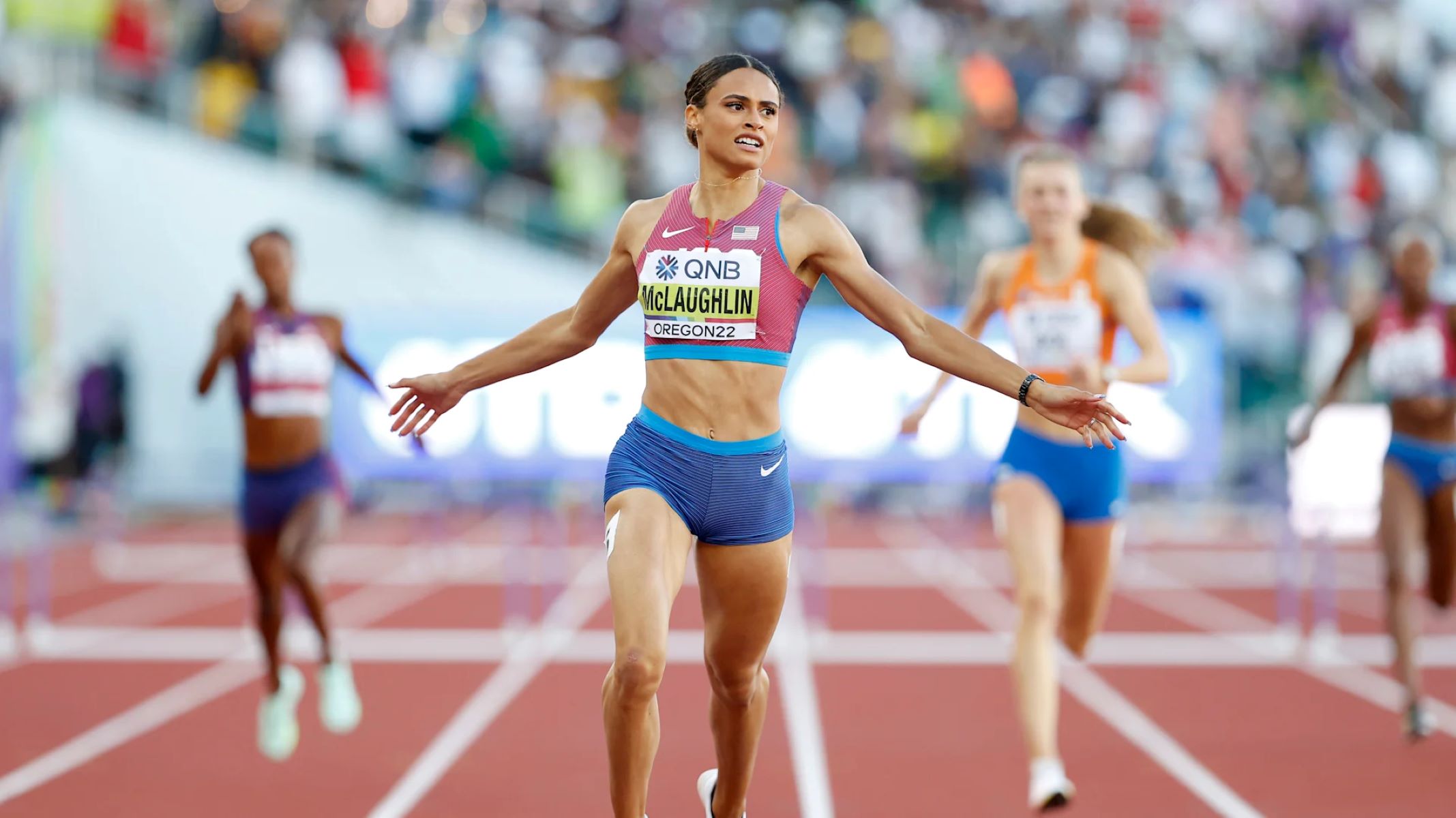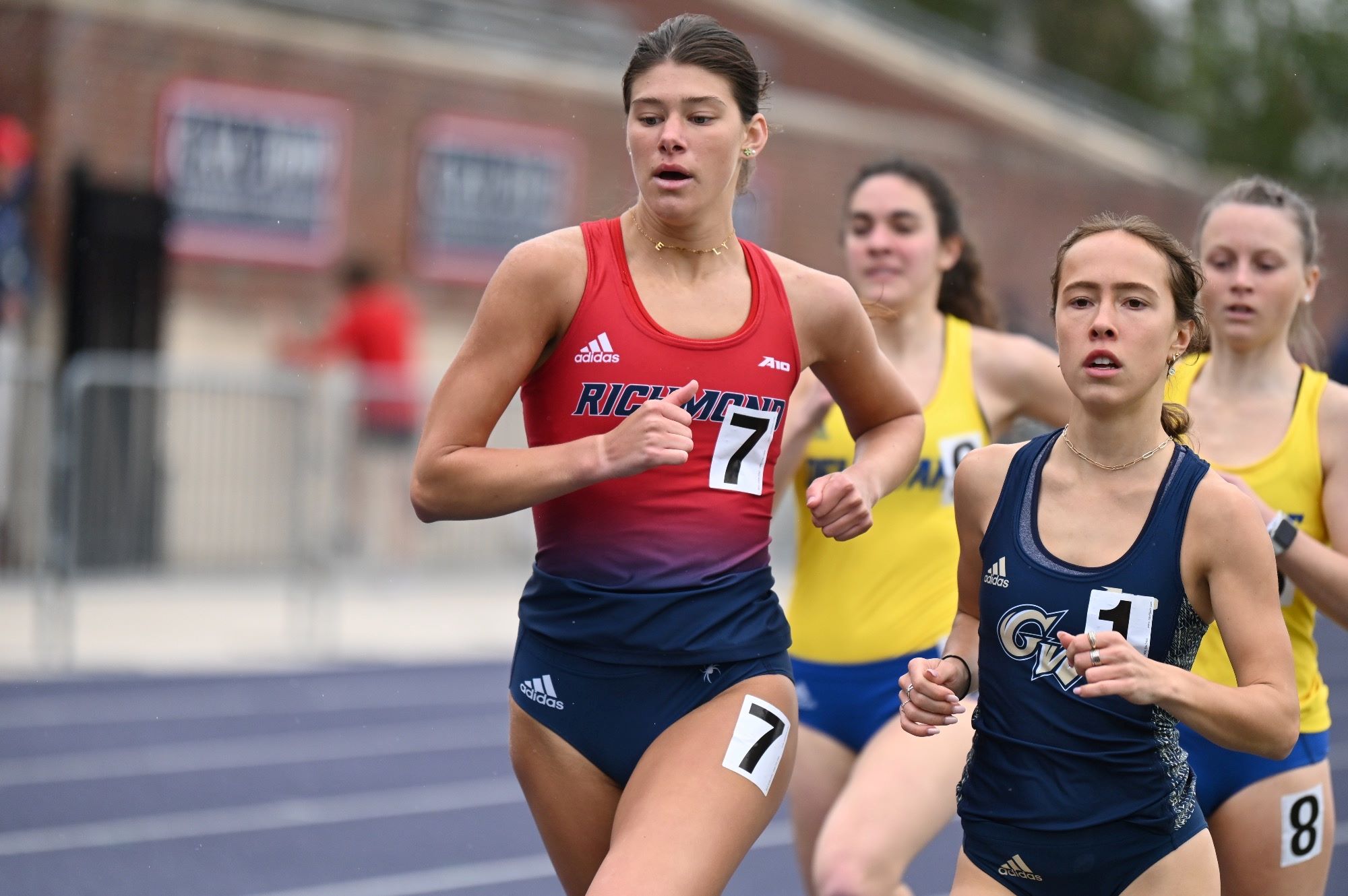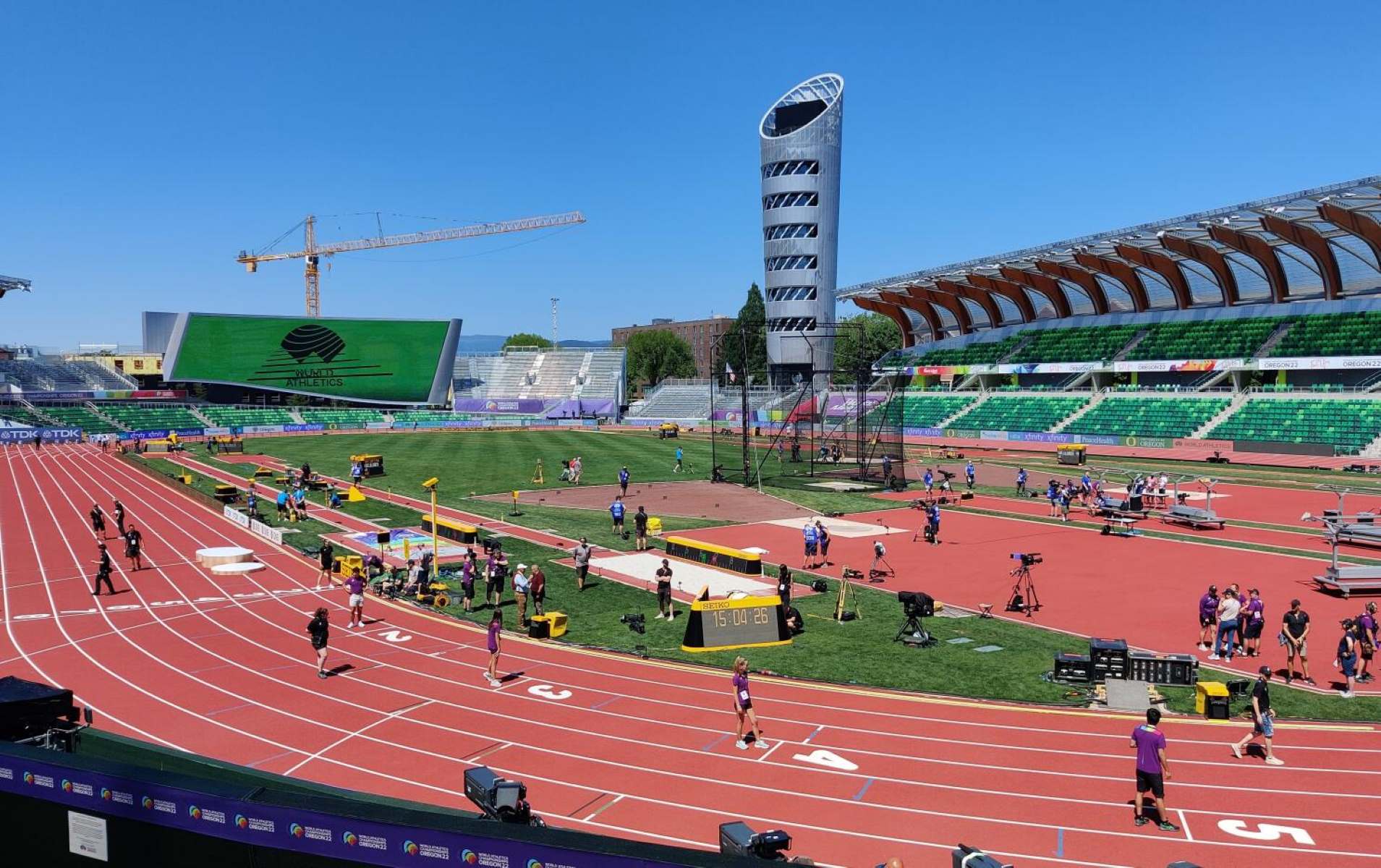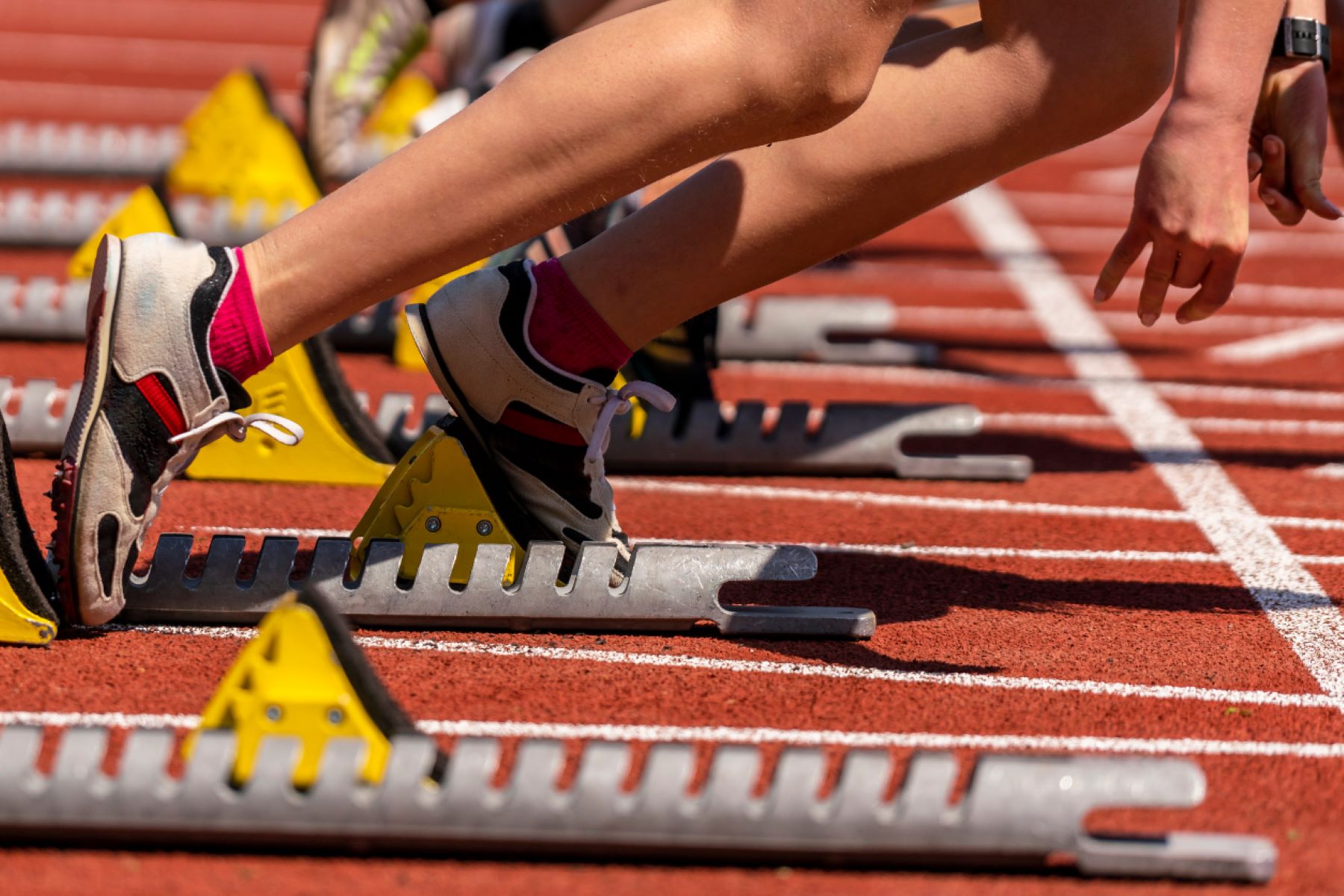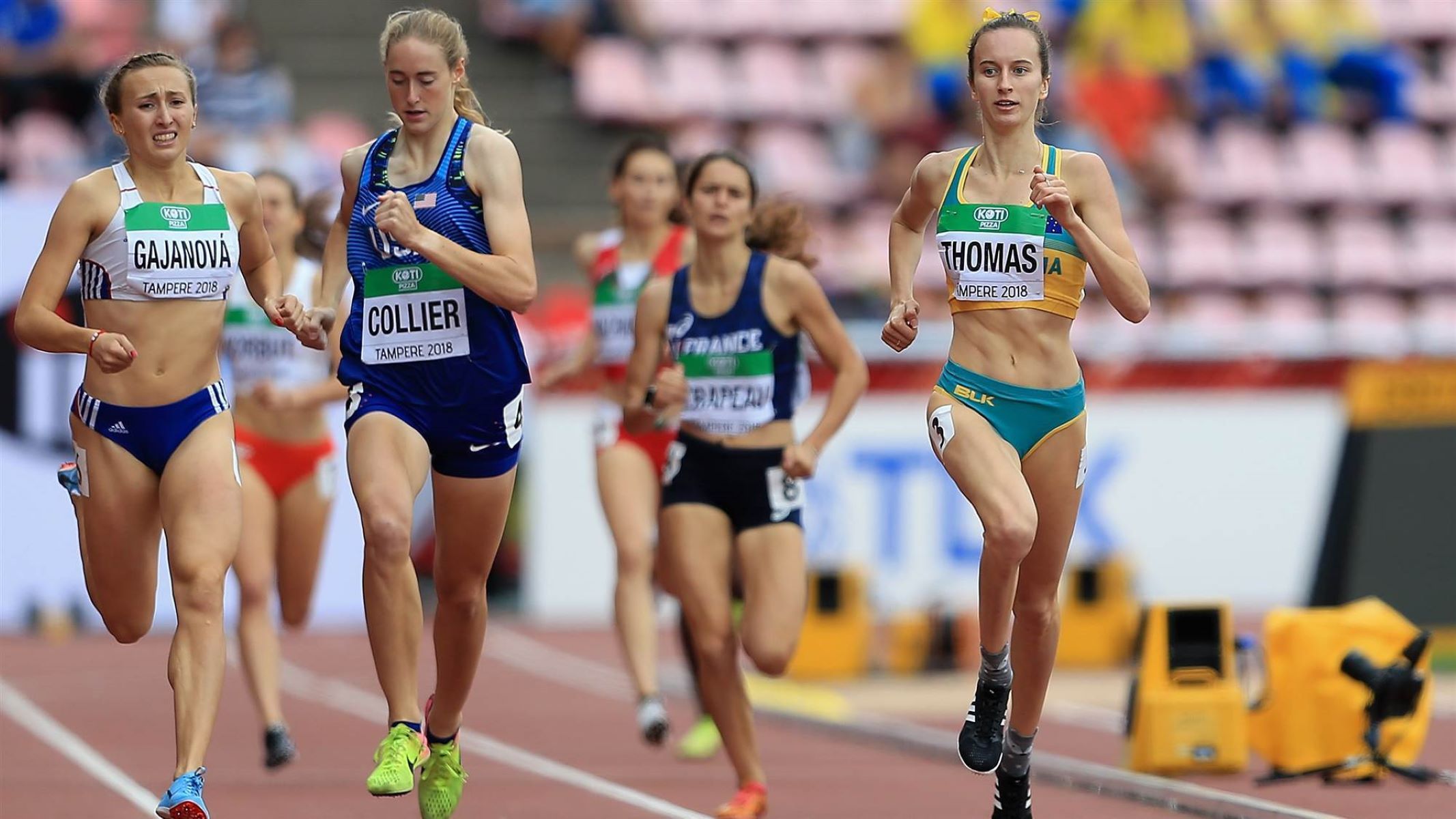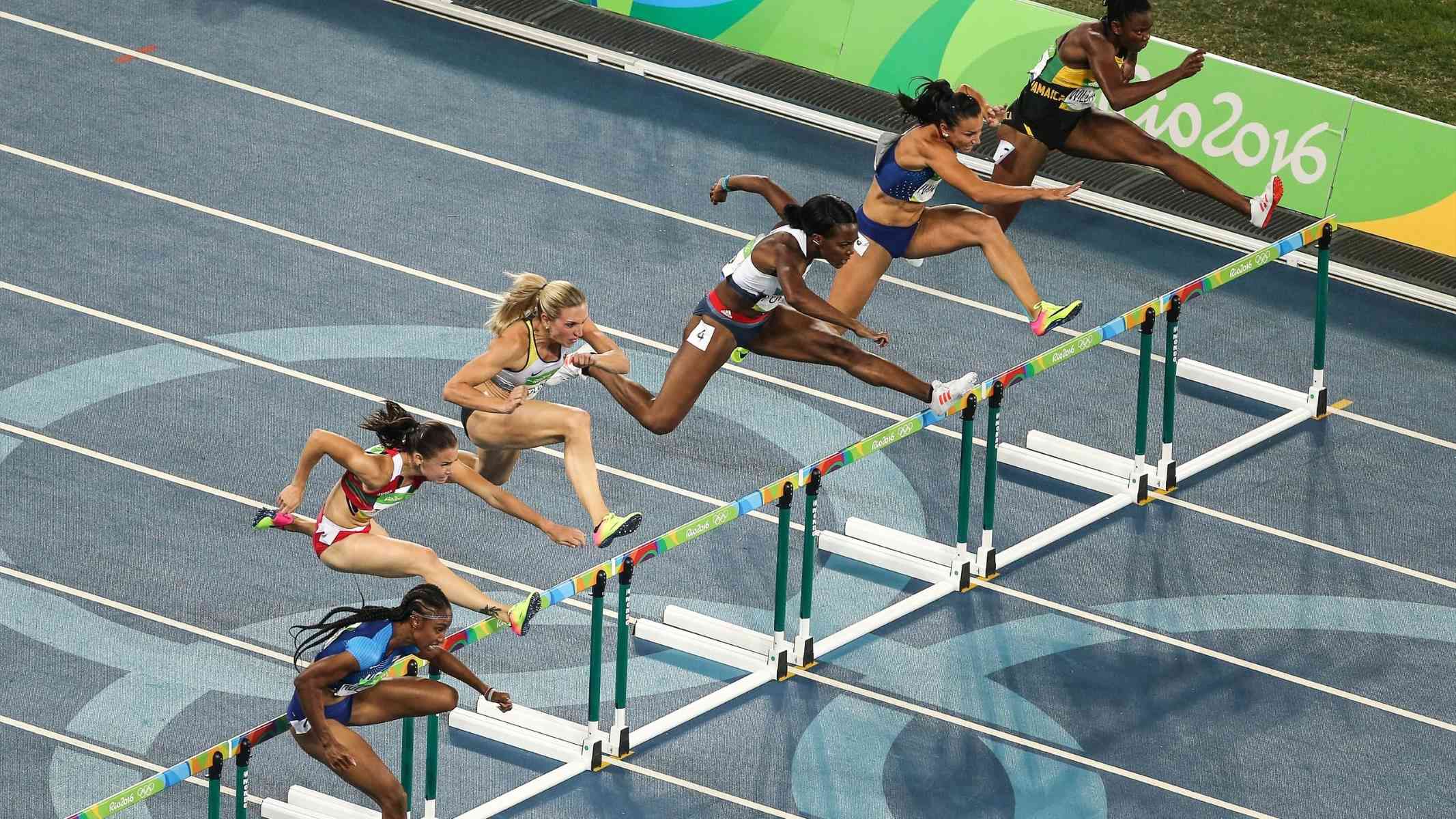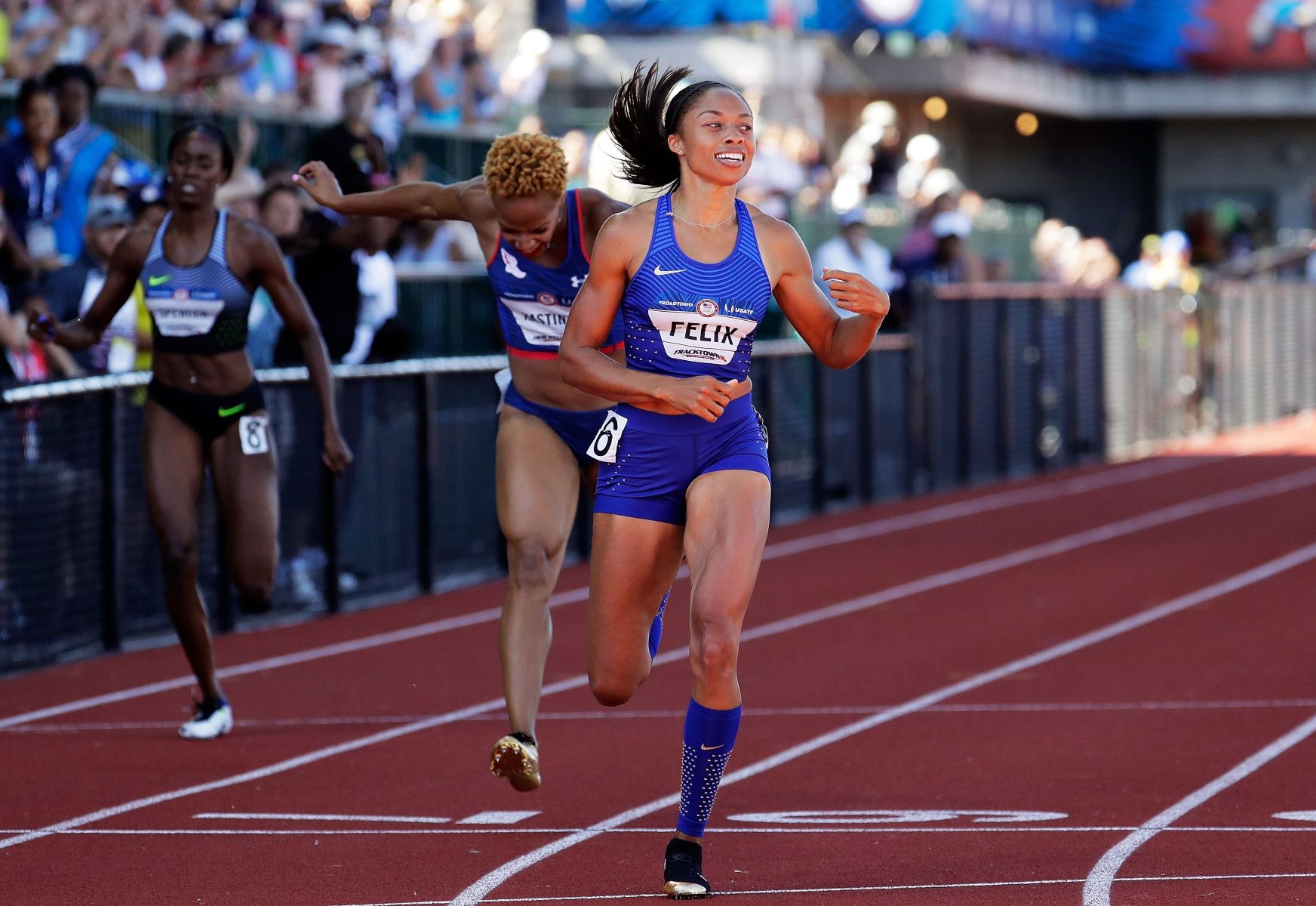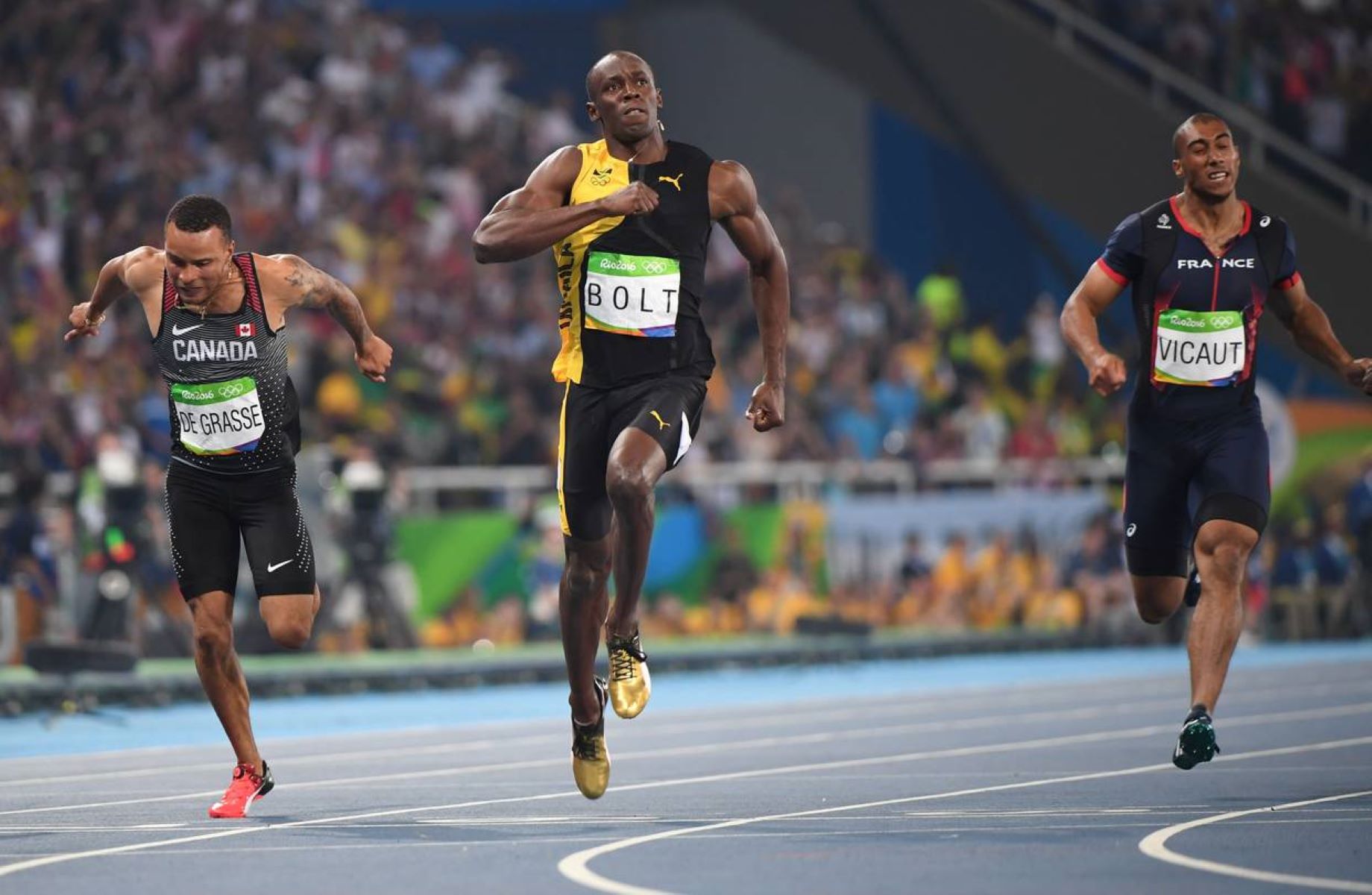Home>Misc>Featured>How Many Countries Participated In Track And Field In The Olympics
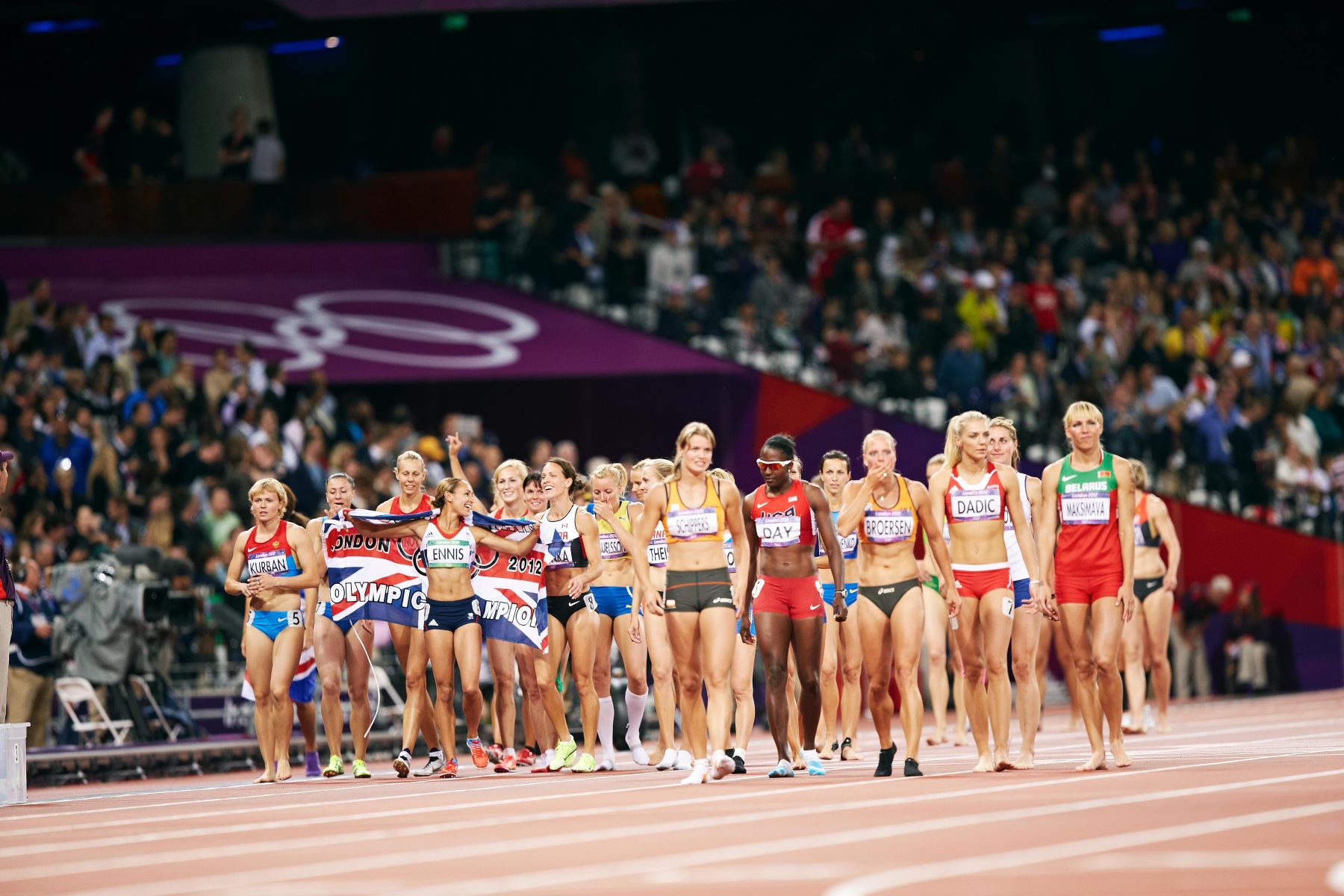

Featured
How Many Countries Participated In Track And Field In The Olympics
Published: September 15, 2023
Discover how many countries participated in track and field at the Olympics, and find out why it is a featured event that captures global attention.
Introduction
Track and field is a sport that has captivated audiences around the world for centuries, showcasing the strength, speed, and agility of athletes in various disciplines. From sprinting and long-distance running to jumping and throwing events, track and field has been a prominent fixture in the Olympic Games, attracting the best athletes from every corner of the globe.
The Olympic Games, held every four years, are a true celebration of sport and showcase the world’s top athletes competing for greatness. Track and field, often considered the cornerstone of the Olympics, is a thrilling and captivating event that draws in millions of viewers from around the world.
In this article, we will delve into the rich history of track and field in the Olympics, explore the growth and evolution of participation in this sport, and analyze the factors that affect the number of countries participating in track and field events.
Track and field events require a combination of speed, strength, and precision, making them a true testament to human athletic ability. From the iconic 100-meter sprint to the grueling marathon, track and field events push athletes to their limits and provide spectators with unforgettable moments of triumph and athleticism.
Over the years, track and field has not only become an integral part of the Olympic Games but also a global phenomenon in its own right. Athletes dream of representing their countries on the Olympic stage, striving to break records and secure a place in history.
This article will explore the fascinating world of track and field in the Olympics, shedding light on the history of this sport, the growth of participation, and the factors that influence the number of countries competing in track and field events. So let’s dive in and uncover the journey of track and field in the Olympics, from its humble beginnings to its current global stature.
History of Track and Field in the Olympics
The origins of track and field can be traced back to the ancient Olympic Games in ancient Greece, where athletic competitions took place in stadiums built specifically for these events. Running, jumping, and throwing were among the core disciplines in these ancient games.
The modern era of track and field began with the revival of the Olympic Games in 1896. The founder of the modern Olympics, Pierre de Coubertin, recognized the importance of track and field as a showcase of athletic skill and included various events in the program.
The inaugural modern Olympic Games held in Athens, Greece, featured track and field events such as the 100-meter sprint, long jump, shot put, and discus throw. Athletes from just 14 countries participated in these events, setting the foundation for the future growth and popularity of track and field in the Olympic Games.
Over the years, track and field in the Olympics has witnessed remarkable developments and changes, with the inclusion of new events and the breaking of numerous records. The International Association of Athletics Federations (IAAF) was established in 1912 to govern and organize track and field events worldwide, further elevating the sport’s status in the Olympic Games.
One of the most iconic track and field moments in Olympic history took place in the 1936 Berlin Games, when Jesse Owens, an African American athlete, defied racial barriers by winning four gold medals in sprint and long jump events. This historic achievement highlighted the power of sport to challenge societal norms and unify people from different backgrounds.
In subsequent Olympic Games, track and field continued to captivate the world with incredible performances and intense rivalries. Legendary athletes such as Usain Bolt, Carl Lewis, and Florence Griffith-Joyner have left a lasting impact on the sport, pushing the boundaries of human athletic achievement and inspiring future generations of track and field athletes.
The inclusion of women’s track and field events in the Olympic Games has been another significant milestone in its history. In 1928, women were allowed to compete in track and field events, bringing a new level of diversity and excellence to the sport. Since then, female athletes have showcased their skills and shattered records in events such as the 100-meter hurdles, high jump, and javelin throw.
Today, track and field is one of the most-watched and celebrated sports in the Olympics, with a wide range of events that test athletes’ speed, endurance, strength, and technique. The history of track and field in the Olympics is a testament to the spirit of competition, international unity, and the relentless pursuit of athletic excellence.
Growth and Evolution of Track and Field Participation
The participation in track and field events in the Olympic Games has seen significant growth and evolution over the years. What once started with a handful of countries competing has now transformed into a truly global phenomenon.
In the early years of the modern Olympics, participation in track and field was limited to a small number of countries, primarily from Europe and North America. However, as the Olympic movement gained momentum and the games became more inclusive, more nations began to participate in track and field events.
A major turning point in the growth of track and field participation came with the expansion of the Olympic Games to include athletes from all corners of the globe. The inclusion of developing nations in the games provided an opportunity for previously underrepresented regions to showcase their athletic talent, leading to an increase in the number of participating countries.
In recent years, efforts have been made to encourage more countries to participate in track and field events. The International Olympic Committee (IOC) has implemented programs and initiatives to support the development of track and field athletes in less represented regions. These programs provide training, resources, and financial support to help athletes from all backgrounds reach their full potential.
The growth of track and field participation can also be attributed to the advancements in communication and transportation. With the advent of television and live streaming, viewers from around the world can witness track and field events in real-time, inspiring a new generation of athletes and generating interest in the sport.
The accessibility and popularity of track and field events have also led to the emergence of regional and continental competitions, such as the African Championships and the Asian Athletics Championships. These competitions serve as platforms for athletes to showcase their skills and qualify for the Olympics, further fueling the growth of track and field participation.
Furthermore, the increasing focus on gender equality has played a significant role in the evolution of track and field participation. The inclusion of more women’s events and the promotion of equal opportunities have encouraged female athletes to excel in track and field, resulting in greater representation and participation from women in the Olympic Games.
Despite the growth and progress, there are still challenges that need to be addressed. Financial constraints, lack of infrastructure, and limited access to quality coaching and training facilities are barriers that hinder the participation of athletes from certain regions. Efforts to bridge these gaps and provide support to underrepresented nations will be crucial in ensuring continued growth and diversity in track and field participation.
The growth and evolution of track and field participation in the Olympic Games are a testament to the power of sport in bringing people together and promoting cross-cultural understanding. As more countries embrace the sport and invest in its development, track and field will continue to inspire and captivate audiences worldwide.
Current Status of Track and Field in the Olympics
Track and field remains one of the cornerstone sports in the Olympic Games, captivating audiences with its thrilling displays of athleticism and fierce competition. Today, track and field continues to hold a prominent place in the Olympic program, drawing in athletes from all over the world to compete on the biggest stage in sports.
The current state of track and field in the Olympics is a reflection of its global appeal and enduring popularity. It features a wide range of events, from sprints and hurdles to long-distance races, jumping, and throwing disciplines. This diversity of events ensures that there is something for everyone, allowing athletes to showcase their unique skills and talents.
The level of competition in track and field is extremely high, with athletes pushing the boundaries of human potential. World records are continually broken, and new stars emerge with each Olympic cycle. The Olympics provide a platform for athletes to etch their names in history, solidifying their legacies as legends of the sport.
One of the notable aspects of track and field in the Olympics is the global representation of athletes. Countries from all continents send their best athletes to compete, fostering a sense of international unity and friendly rivalry. The diversity of participants enriches the competition and allows for cultural exchanges that transcend borders.
The inclusion of new events and formats in recent years has added further excitement to track and field in the Olympics. From mixed-gender relays to new disciplines like the 4x400m mixed relay and the 4x100m mixed medley relay, these additions have brought a fresh dynamic to the sport, showcasing teamwork and strategy in addition to individual excellence.
The role of technology in track and field has also evolved over time, enhancing the accuracy and fairness of competitions. Advancements in timing systems, video replay, and photo-finish technology ensure that races are decided with precision, leaving no room for doubt or controversy.
Furthermore, the Olympics have provided a platform for track and field to address important social issues. Athletes have used their platform to raise awareness about various causes and advocate for positive change, making track and field an agent of social progress and unity.
Looking ahead, track and field in the Olympics will continue to evolve and adapt to a changing world. There will be a continued focus on fostering equality, promoting diversity, and creating opportunities for athletes from all backgrounds.
With each edition of the Olympic Games, track and field will captivate audiences with its display of raw athleticism, perseverance, and the pursuit of excellence. It will continue to inspire future generations of athletes and serve as a symbol of human achievement and unity on the global stage.
Factors Affecting Participation in Track and Field
Several factors influence the level of participation in track and field events at the Olympic Games. From geographical considerations to cultural influences, these factors shape the representation and diversity of athletes in this iconic sport.
Geographical and Economic Factors: The geographic location and economic development of a country play a significant role in the participation of track and field in the Olympics. Countries with larger populations or higher GDPs tend to have a greater pool of potential athletes and better resources to invest in sports infrastructure and development programs. This often translates to a higher number of athletes and more competitive performances in track and field events.
Historical Success and Sporting Culture: The success and historical achievements of a country in track and field can also influence participation. Countries with a strong track and field tradition and a history of producing successful athletes are more likely to prioritize and invest in the sport, resulting in greater participation levels. Furthermore, a country’s overall sporting culture and emphasis on physical activity can contribute to the development of athletes in track and field.
Access to Facilities and Training: The availability and accessibility of training facilities, coaching expertise, and sports programs are crucial in nurturing track and field talent. Countries with well-established sports infrastructure, including training centers, tracks, and coaching programs, can offer athletes the necessary resources and support to excel in track and field. Lack of access to facilities and training opportunities can act as barriers for athletes from underprivileged regions, affecting their participation levels.
Social and Cultural Factors: Social and cultural factors can influence participation in track and field. In some societies, certain sports may be more highly regarded or preferred over others, leading to greater investment and emphasis on those disciplines. Cultural traditions, societal expectations, and perceptions of certain sports can also influence an individual’s decision to pursue a career in track and field. Gender bias and cultural restrictions may limit the participation of athletes, particularly women, in some regions.
Government Support and Funding: The level of government support and funding allocated to sports, including track and field, significantly impacts participation. Countries with robust sports policies, funding mechanisms, and support structures tend to attract and develop a higher number of athletes. Government initiatives aimed at identifying and nurturing talent, providing financial assistance, and creating competitive pathways can have a direct impact on participation levels.
International Sporting Events and Exposure: The exposure and opportunities provided by international sporting events, such as regional championships and continental games, can motivate athletes to pursue track and field and strive for Olympic representation. Competing at these events allows athletes to gain valuable experience and exposure, increasing their chances of qualifying for the Olympics and representing their countries.
Awareness and efforts to address these factors can help to promote greater participation and diversity in track and field events at the Olympics. By fostering inclusivity, providing access to resources, and breaking down cultural and societal barriers, more athletes from a wide range of backgrounds can embrace track and field and make their mark on the world stage.
Analysis of Countries Participating in Track and Field
The participation of countries in track and field events at the Olympic Games can provide valuable insights into the global landscape of the sport. Analyzing the countries that actively engage in track and field can shed light on various factors, including sporting traditions, development programs, and the impact of geographic and economic factors.
Powerhouses of Track and Field: Historically, certain countries have established themselves as powerhouses in track and field, consistently producing top-level athletes and dominating medal standings. The United States, for example, has a rich history in the sport and consistently ranks among the top nations in terms of participation and success. Other nations known for their strong track and field programs include Jamaica, Kenya, Ethiopia, Great Britain, and Germany.
Geographical Factors: Geographical factors can greatly influence the participation of countries in track and field. Nations with large populations and vast territories often have a greater pool of potential athletes, which increases the likelihood of participation in track and field events. This is evident in populous countries such as China, India, and Nigeria, which have seen an increase in their representation in track and field in recent years.
Economic Considerations: Economic factors can also impact participation in track and field. Countries with strong economies often have the resources to invest in sports infrastructure, training facilities, and coaching programs. This allows them to support the development of athletes and cultivate a culture of excellence in track and field. Wealthier nations such as the United States, Germany, and Japan have the means to provide extensive support to their athletes, resulting in higher participation and success rates.
Emerging Nations: The Olympic Games provide an opportunity for emerging nations to showcase their athletic talent and compete at the international level. These nations often prioritize sports development programs and invest in the training of their athletes. As a result, countries such as South Africa, Brazil, and Qatar have emerged as formidable competitors in track and field, making significant strides in recent years.
Development Programs: The presence of well-structured sports development programs within a country can be a determining factor in track and field participation. Countries that prioritize grassroots initiatives, talent identification programs, and athlete development strategies are likely to produce a larger number of athletes who are competitive at the Olympic level. Programs such as the Talent Identification Program (TIP) by the International Association of Athletics Federations (IAAF) have contributed to the growth of track and field participation in many countries.
Societal and Cultural Influences: Societal and cultural factors can impact the participation of countries in track and field. Cultural traditions, societal expectations, and gender biases may influence the number of athletes representing a particular country. Efforts to address these influences, promote gender equality, and encourage wider participation are crucial for achieving a more diverse representation in track and field.
Analyzing the countries participating in track and field events at the Olympics provides valuable insights into the sport’s global landscape. It highlights the influence of geographical, economic, and cultural factors on participation levels. Recognizing the countries that excel in track and field can also inspire future generations of athletes, further promoting the growth and development of the sport worldwide.
Conclusion
Track and field has long been a centerpiece of the Olympic Games, captivating audiences around the world and inspiring athletes to push the boundaries of human potential. The history of track and field in the Olympics reflects its evolution from ancient Greece to the modern era, where it has become a global phenomenon.
The growth of track and field participation in the Olympic Games is a testament to the sport’s enduring popularity and universal appeal. Over the years, the number of countries participating in track and field events has expanded, showcasing the sport’s ability to transcend borders and unite nations in friendly competition.
Various factors influence the level of participation in track and field, including geographical and economic considerations, historical success and sporting culture, access to training facilities, social and cultural influences, government support, and international exposure. By addressing these factors and fostering inclusivity, the track and field community can create opportunities for athletes from all backgrounds to thrive and excel.
The current status of track and field in the Olympics is strong, with a diverse range of events that captivate audiences and showcase the brilliance of athletes from around the world. The sport continues to evolve, with new events and formats being introduced to enhance excitement and competitiveness.
The analysis of countries participating in track and field reveals the influence of geographical, economic, and cultural factors on their representation in the Olympics. Powerhouse nations, emerging nations, and countries with well-structured development programs contribute to the growth and success of track and field on the global stage.
In conclusion, track and field holds a special place in the Olympic Games, showcasing the beauty of athleticism and the pursuit of excellence. As the sport continues to evolve and embrace diversity, it will inspire future generations of athletes and serve as a symbol of unity and achievement worldwide.
